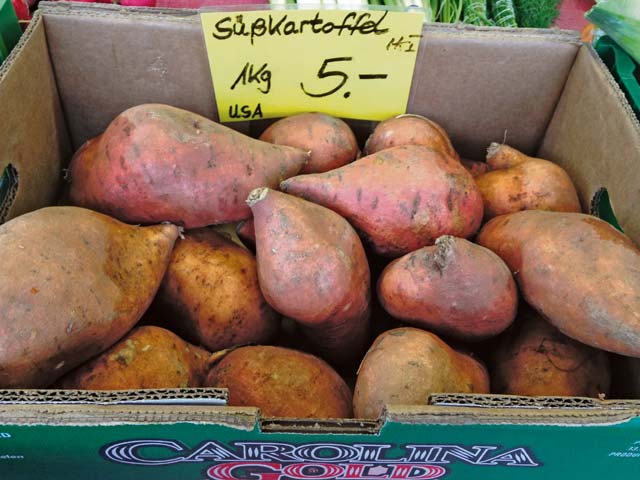 The sweet potato rightfully takes center stage during the traditional American meal of Thanksgiving. As a staple side dish or dazzling dessert, vegans to carnivores gnaw on this amazing tuber with delight.
The sweet potato rightfully takes center stage during the traditional American meal of Thanksgiving. As a staple side dish or dazzling dessert, vegans to carnivores gnaw on this amazing tuber with delight.
The history of the sweet potato has always been innovative. Columbus and his explorers discovered the sweet potato over 500 years ago and quickly discovered its virtues. It is easily harvested, withstands long transportation (almost a year!), contains multiple healthy nutrients and is highly palatable. Despite taking more than 200 years to be widely accepted throughout the world, the staple is now eaten more than Irish potatoes or corn. In 2012 alone, more than 2.6 billion pounds of sweet potatoes were produced in the United States. That’s nothing compared to production from other parts of the world: China produces 80 million tons, Africa 14 million tons, and Central and South America about 2 million tons. Although they may look or taste similar, sweet potatoes belong to a completely different family than the white potato or the yam (and it’s safe to assume that even if you buy a “yam” in the states, it’s really a sweet potato!)
Athletes, dietitians and even kings have pointed out the multiple benefits of the sweet potato: It’s a great balance of starch and power house vitamins, and it’s flavor is versatile. Rich in beta carotene, vitamin A and vitamin C, they may be the most nutrient dense source of carbohydrates available. Research has shown that the sweet potato can help regulate blood sugar and has anti-inflammatory pore properties.
Balanced between savory and sweet dishes, the sweet potato continues to be the perfect main ingredient for our holiday fare. Selecting them doesn’t mean compromising on a commitment to a healthy lifestyle during celebration months. Whether you’re looking for the taste of tang or spice, perhaps crave comfort, the sweet potato won’t disappoint.
Want to grow your own? Try it out! Green thumbs can “re-grow” sweet potatoes from any organic one that has big, old “eyes” growing on it. Cut out four or five big, square pieces with an eye on it and leave them sitting at room temperature for three days to dry. Plant the dry pieces with the eye facing upward in a large pot, with about only 4 to 5 inches of soil. When you start to see room, slowly add more soil.
Here are some recipes that will be sure to stop the
show for your festive get togethers!
Lifestyle
The innovative sweet potato
(Visited 326 times, 1 visits today)


